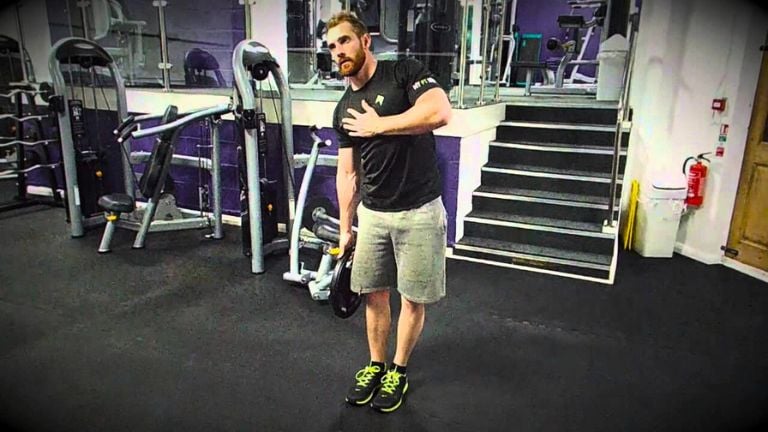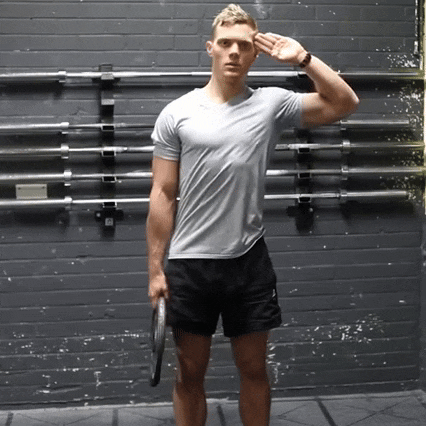The weight plate side bend is an effective exercise for training the internal and external obliques. It also strengthens the spine’s lateral flexion, improves spinal mobility, and helps develop a strong and stable core.
It also helps to get rid of the extra layer of fat around the waistline, reduce the risk of back pain, and improve functional movements.
Variations: For an easier variation, you can do a bodyweight side bend, and for the challenging side bend, do a barbell side bend or weighted 45-degree hyperextension bench side bends.

Plate Side Bend Muscles Worked
- The plate-side bend primarily targets the obliques, which have two layers: the external obliques (the larger, superficial muscles on the sides of the abdomen) and the internal obliques (located beneath the external obliques).
- It also hits the Abs, Serratus anterior, and quadratus lumborum, (the deep, hidden muscle on either side of the lower spine)
Known Your Body Fat %: Try Free Calculator To Know Your Body Fat Percentage
How To Do Plate Side Bend

- First, stand up straight with your feet about as wide as your shoulders.
- Grab a plate in your right hand and let it hang by your side. You can put your other hand behind your head or at the side—it’s up to you.
- Keep your body tall and proud. Imagine a string pulling you up from the top of your head.
- Your shoulders should be right over your hips, and keep your head neutral.
- Slowly lean to your left, bending at the waist. Go as far as you comfortably can – you should feel your side muscles (obliques) working hard. Hold it for a quick second at the bottom.
- Bend sideways at the waist to the left as low as possible, using your oblique muscles to pull your torso down.
- Then, bring yourself back up to where you started. That’s one rep.
- Do as many as you’re aiming for, then switch the plate to your other hand and do the same on the opposite side.
Know More: 18 Abs Exercises At Home Without Equipment
Proper Form And Tips
- Maintain a neutral spine from start to finish. Avoid rounding your shoulders forward or overextending your spine.
- As you perform the exercise, you should feel only a slight stretch in your side. Do not laterally flex beyond this point.
- Keep your arm close to your body and your hips still throughout the exercise.
- To work the oblique muscle, perform these exercises slowly and steadily.
- Avoid loading the heavyweight for this exercise. Large, overdeveloped oblique muscles will make your waist appear bulky.
- If you hold a weight in both hands then they will counterbalance each other and this exercise will lose its effectiveness. Do one side at a time.

Manish is a NASM-certified fitness and nutrition coach with over 10 years of experience in weight lifting and fat loss fitness coaching. He specializes in gym-based training and has a lot of knowledge about exercise, lifting technique, biomechanics, and more.
Through “Fit Life Regime,” he generously shares the insights he’s gained over a decade in the field. His goal is to equip others with the knowledge to start their own fitness journey.
